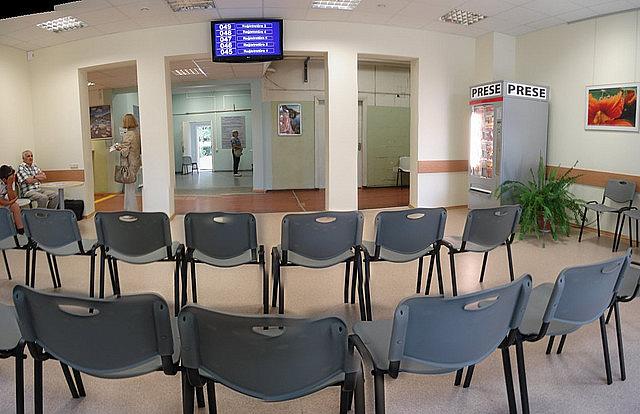As uninsured dwindle, safety net systems must adapt to survive

Sparse waiting rooms could spell financial disaster for public health systems.
Here’s a thought: If the ambitions of the Affordable Care Act are realized, we won’t need a safety net.
That’s because, by definition, the safety net cares for people without health insurance. But if everyone is insured, hospitals and clinics that currently serve the indigent won’t be needed any more.
That’s just the scenario that public hospitals — places like Highland Hospital in Oakland, San Francisco General Hospital, and Los Angeles County-USC Medical Center — are hoping to avoid.
Right now public health care systems are still vital for providing care to poor and undocumented California residents. And unless California passes legislation that extends health care coverage to undocumented workers, they will still be needed to serve millions for years to come.
At the same time, the rolls of the uninsured are decreasing rapidly. Since implementation of the Affordable Care Act (ACA) began in October 2013, California’s uninsured population has been cut in half and is expected to continue falling as more people take advantage of subsidies and benefits offered through Medi-Cal, the state’s Medicaid program, and Covered California, the state’s health exchange.
In the face of losing the population they were built to serve, public hospitals and health systems have two choices: 1) Go extinct, or 2) Roll with the times.
Most public health care institutions are opting for the latter. That means competing for newly insured patients. Or, in other words, trying to hang onto the people they served before ACA — patients of whom who now have choices, including large insurers such as Kaiser Permanente, Health Net and Anthem Blue Cross.
“We’re forcing public hospitals to compete in one of the most competitive industries that has ever existed in the economy,” said Alex Briscoe, director of the Alameda County Health Care Services Agency.
But compete public hospitals must, if they want to stick around. Traditionally, federal Disproportionate Share Hospital payments (DSH) have helped sustain hospitals that serve large populations of Medicaid and uninsured patients. But in a few years, that money is expected to go away. So the public health system must adjust, figuring out how to better attract insured payments and make money, instead of just providing care.
It typically means adjusting back offices so they can bill for services, something public health systems have done little of. In addition, hospitals and clinics must still care for people not covered by the ACA, the majority of whom belong to immigrant communities and often suffer from complex conditions.
“We face massive challenges when competing with the private sector players,” Briscoe said. “But we have to exist.”
That’s because under the current system, there will always be people without insurance. Many of the county hospitals also serve as trauma centers. They’re also critical training grounds for the next generations of physicians and nurses.
So how do such institutions compete? Erica Murray, president and CEO of the California Association of Public Hospitals and Health Systems, says public systems must leverage their assets; namely, their expertise in treating disadvantaged populations.
For example, Highland Hospital offers a web-based translation system that allows immigrants to receive care in their native languages. Providers at public hospitals are also used to treating complex cases, and when they’re part of larger health systems, such as in Alameda, Contra Costa and Los Angeles counties, a whole network of caregivers and resources can be drawn on to help. So if a patient is depressed because they need a job, rather than treating the symptom, counties may be able to treat the source by giving the patient access to social services that address root causes.
In addition, most public hospitals are located near major transportation lines, which is how many safety net patients get to their appointments.
“That’s extremely important because they’re not going be taking taxi rides to the hospital,” Murray said. “It’s that kind of thoughtfulness about a low-income, Medi-Cal population that these systems can bring to bear.”
All of which to say, it’s a dynamic time for public health systems. To survive, they must change the way they do business.
That’s a huge challenge. But Murray says she’s encouraged by the creativity she’s seeing in many safety net systems.
“I am encouraged by their willingness to embrace this moment,” Murray said. “Instead of having a protective response, or a backwards-looking response, they are all energetically responding by looking forward.”
Photo by Toms Bauģis via Flickr.
Related posts
Under ACA, safety-net hospitals still face financial peril
Messy Start to Health Reform as a San Francisco Health Care Partnership Collapses

